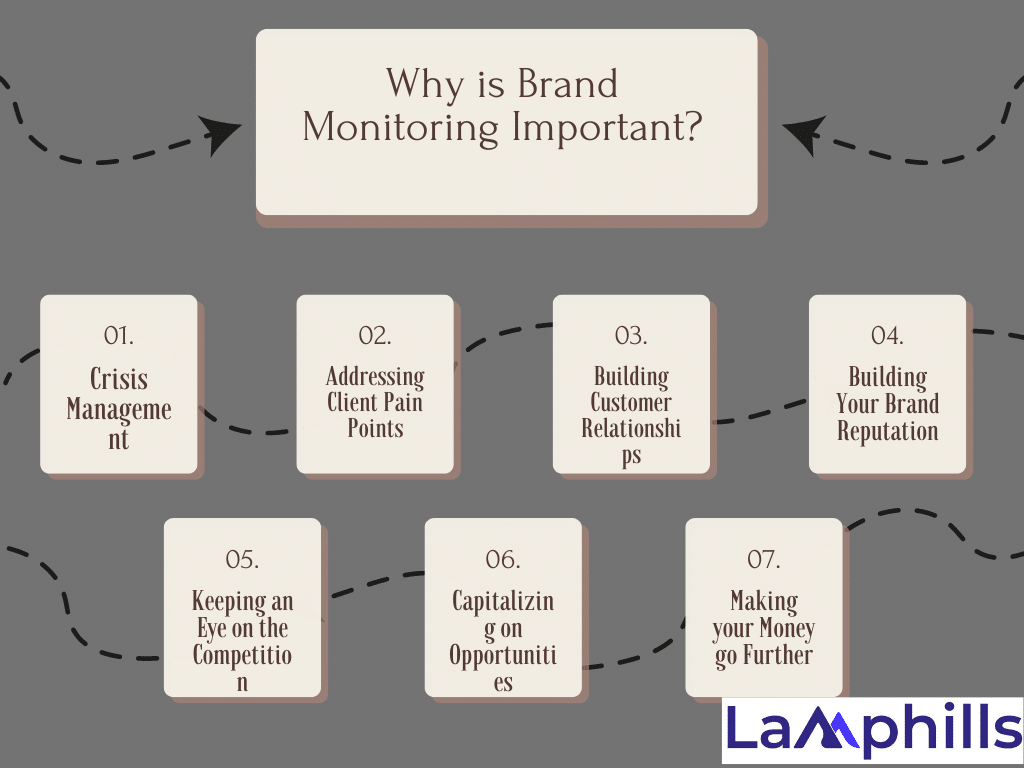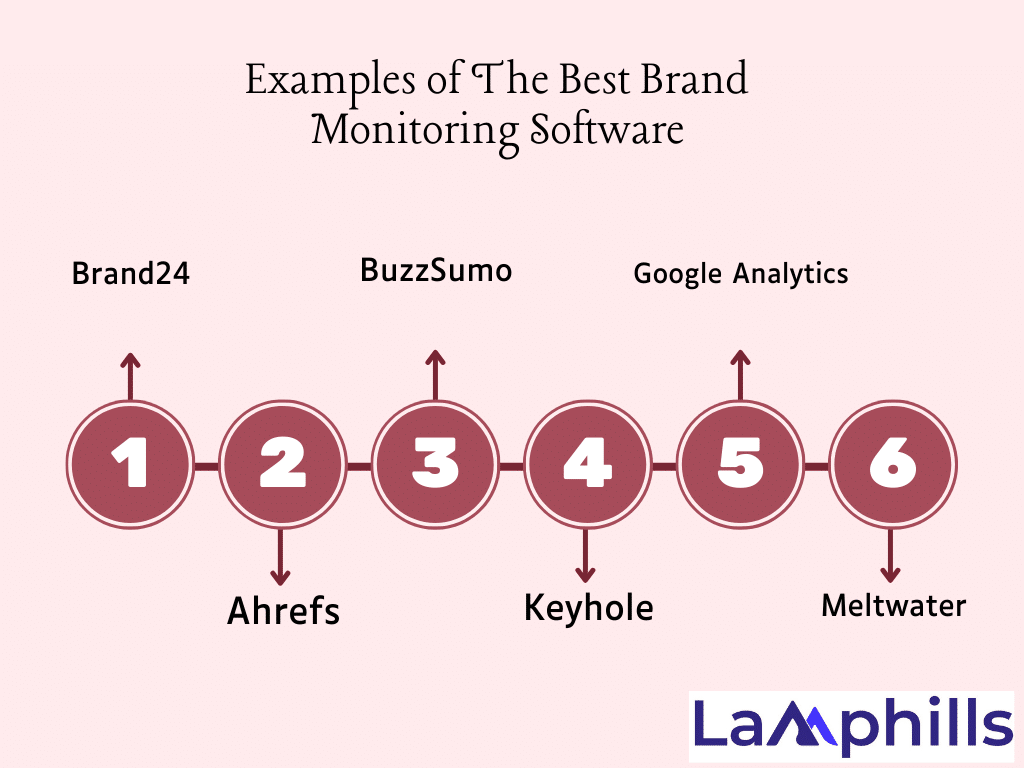I remember the first time I understood the importance of consumer insights. I worked for a small e-commerce business a few years ago. We were perplexed as to why our previously devoted consumers were suddenly abandoning us. We tried surveys, focus groups, and even one-on-one interviews but couldn’t obtain a good image. That’s when we decided to invest in brand monitoring software, which altered everything.
Now, have you ever heard of a tech company that received a lot of criticism online for its smartphones? A few years ago, there was a great controversy on social media when it was revealed that a major smartphone manufacturer was purposefully slowing down older models. People were upset, believing they’d been duped into updating their phones. If you’re familiar with this incident, you might agree that it’s a textbook example of how trust takes years to create but just seconds to break. But what does this instance have to do with brand monitoring, the blog’s major theme?
Well, everything.
It serves as a textbook example of why monitoring how your business is regarded online is critical. In the business world, surprises are rarely a good thing—especially those that leave your customers unsatisfied.
So, how do you monitor brand chatter and avoid becoming the next headline for all the wrong reasons? That’s exactly what we’ll be covering today. Let’s get started by answering all of your brand and media monitoring inquiries.
Key Takeaways
- Brand monitoring software enables firms to observe and analyze their brand’s presence across several web channels. This includes social media mentions, internet reviews, blog postings, and even newspaper pieces.
- Some of the key features that make brand monitoring software indispensable include real-time monitoring, sentiment Analysis, etc.
- Key tools like Brand24, Ahrefs, BuzzSumo, and Meltwater exemplify how businesses can leverage these insights for better marketing strategies and overall brand management.
- It’s important because It enhances customer relationships by identifying opportunities for engagement and building brand reputation
What is Brand Monitoring Software?

Brand monitoring is the practice of collecting and evaluating mentions of your brand across social media channels and touchpoints to convert them into useful insights. Specifically, it entails collecting customer feedback and brand mentions from social media, blogs, forums, product evaluations, YouTube videos, and surveys.
For example, suppose you work for a well-known smartphone firm and have been constantly tracking brand comments on social media. After conducting a thorough investigation, you discover that a consistent set of clients praise your camera quality and user-friendly UI. This product insight can be something you wish to emphasize in your future social media marketing initiatives USPs to attract even more followers.
On the other hand, suppose you uncover a few complaints concerning the response time of your social media customer service. This could also be a warning or alert to enhance your customer care and assistance, as customers can eventually view your brand as untrustworthy if you do not make the necessary improvements.
Simply put, brand monitoring software enables firms to observe and analyze their brand’s presence across several web channels. This includes social media mentions, internet reviews, blog postings, and even newspaper pieces. The software collects and analyzes data, providing insights that might help you understand how the public perceives your brand.
Understanding Brand Monitoring Software
The internet is a large and ever-changing environment, making it difficult for brands to keep track of what people are saying about them. The solution: brand monitoring solutions that handle the majority of the job for you.
Brands require monitoring tools as part of their branding initiatives. Think of them as your brand’s paparazzi, documenting every word and sentiment to help you understand how the public perceives your products or services. If you’re vigilant about brand monitoring, you’ll be among the first to notice when someone mentions you online, for better or worse. These technologies help shape successful marketing plans by tracking client input, identifying trends, and keeping an eye on competition.
Key Features
Some of the key features that make brand monitoring software indispensable include:
- Real-Time Monitoring: Keeping track of what’s being said about your brand as it happens.
- Sentiment Analysis: Understanding the emotional tone behind the mentions.
- Competitive Benchmarking: Seeing how your brand stacks up against the competition.
Why is Brand Monitoring Important?

Keeping an ear to the ground across all touchpoints offers various advantages, including providing feedback and insight critical to increasing brand recognition, awareness, sentiment, and loyalty. Staying relevant is also easier when you have a solid understanding of the dynamics of your markets. Here are some instances of why brand monitoring is essential:
#1. Crisis Management
Sometimes reputational crises arise that must be addressed immediately. This is why Online brand monitoring in real-time can help you spot these trending moments as they happen and control them before they worsen. You can tell if a crisis is forming by brand mentions and relevant keywords across social media platforms consumer feedback forms and other sources.
#2: Addressing Client Pain Points
Brand monitoring is an excellent technique to identify and address client pain issues. This is done by listening to what your customers say, which will teach you the regions of the purchasing process that individuals have found tough.
For example, brand monitoring will notify you if consumers complain about a complex checkout procedure on social media or if you receive a large number of feedback comments regarding delayed delivery via your feedback forms. This allows you to address these concerns before they become out of control.
#3. Building Customer Relationships
When you listen to what your customers (and future customers) say about you, you can identify opportunities to engage with them. That may include uncovering user-generated content (UGC) from brand-loyal advocates and fans to highlight and share on your channels, or it could entail cultivating a stronger sense of community by actively reacting to conversations about you rather than with you. The trick is proactive in monitoring conversations and brand references.
#4. Building Your Brand Reputation
Growing your brand’s reputation is a gradual, continuing, and never-ending process, but you won’t know if you’re moving in the right direction unless you regularly monitor feedback online. With a brand monitoring plan in place, you can give quantitative values to factors such as brand reputation and watch its evolution over time.
#5. Keeping an Eye on the Competition
You can watch your competitors’ brands in addition to your own. This enables you to understand what your competitors’ consumers are saying, what pain issues you can help alleviate, and how to improve your brand’s reputation above your rivals. The inclusion of competitor brand mentions and discussions about their business will enrich your competitive analysis.
#6. Capitalizing on Opportunities
When you monitor your brand, you can identify and capitalize on opportunities as they arise. Also, finding emerging subjects that match your brand’s values and developing products or services around them might help you get a better sense of what your customers want. These chances can arise from monitoring your competitors’ branding and determining what their customers are missing from those experiences, or from monitoring what your customers are saying.
#7. Making Extra Money
Brand monitoring allows you to check how effectively your marketing has been received and identify new topics to address to help convince potential and present customers and clients to engage with your brand. Any information you can uncover – preferences for product features, responses to marketing efforts, and so on – can assist you in crafting better messages, adding targeted product lines, and more. The more information you can gather and apply, the better your audience will accept your output and the more likely you are to maintain and expand your revenue.
Examples of The Best Brand Monitoring Software

Here are a few brand monitoring software to consider, ranging from simple tools for tracking brand mentions to complicated omnichannel brand monitoring platforms. Each has something unique to offer, so you can choose the one that fits your business perfectly.
#1. Brand24
Brand24’s brand monitoring software can watch mentions across the web and social media, providing you with a detailed perspective of your company’s reputation, industry trends, and more. It can assess sentiment while also tracking your web and social mentions in real time. Its features, such as monitoring brand reach, make it a popular choice for companies wishing to track their company’s online presence and understand where it fits in the larger market. Brand24 provides the ideal balance of social listening and comprehensive brand tracking.
Brand24 will provide you with a wealth of information about your brand, including how it is regarded online, as well as where and what others are saying about it. A user-friendly dashboard simplifies navigating.
To begin a project, simply input your brand name into the project creation wizard and select Create. From that point on, the process of tracking brands, hashtags, and more begins! But that is not all! Brand24 also provides two comparing modes. The Comparison tab allows you to compare two independent projects. This is beneficial for comparing your brand’s reputation to that of competitors. Or if you have two services, products, or marketing campaigns and want to know which one met the required KPIs. However, you can also monitor how the social media KPIs for a single project vary over time. This information can be found in the Summary tab.
#2. Ahrefs
Ahrefs, while primarily an SEO tool, may provide valuable insights into the general health of your company. The capacity to obtain backlinks from other websites is only one aspect of a much wider branding picture. Backlinks are sometimes the result of your conscientious efforts. Other times, they occur naturally.
When you receive unsolicited backlinks from external parties, you have no control over the anchor language or context in which they refer to you. These are critical details to understand since they can affect how others perceive your brand.
Ahrefs monitors your whole backlink profile, showing you who is driving traffic to your site, the anchor text they use, their domain authority rating, and other information.
And, because it’s an SEO tool, you can track keywords and organic ranks as they change over time. If you detect a drop in rankings, combine it with other brand-related data, such as customer sentiment analysis, to determine whether the drop is due to a brand image issue or something else.
#3. BuzzSumo
People are talking about your brand online, even if they aren’t having direct discussions with you. BuzzSumo allows you to set up keyword alerts and respond at the perfect time.
Keyword alerts are useful not only for brand monitoring, but also for tracking competitors, industry news, and items or services similar to yours. You can also receive notifications when new content is published on websites or by writers you are following.
If you see that content regarding your brand is being shared, you may check the popularity of the article using your personalized dashboard. See how many times it has been shared on various social media platforms. If the content might bring negative publicity, gauging its popularity can show you whether there’s a real threat you need to address.
BuzzSumo Brand Monitoring Key Features
- Content discovery
- Competitor monitoring
- Custom alerts
#4. Keyhole
Keyhole monitors brand media mentions (direct and indirect) from hashtags, influencers, social media posts, and keywords in real-time and consolidates your data into a single source of truth. When a post about your brand is going to go viral, you’ll get alerts so you can plan your next move.
Monitoring hashtags allows brands to have a better grasp of what people are talking about online and how they’re discussing it. These hashtags may also present unique chances to increase your brand’s online profile and reach a larger, more targeted audience. Brand Monitoring Through A Keyhole
Key Features
- All-in-one social media analytics
- Brand tracking
- Direct and indirect mention monitoring
#5. Google Analytics
Google Analytics, another successful brand monitoring tool, can provide useful brand insights. First and foremost, as a website analytics platform, you may monitor changes in traffic patterns over time. This might assist you in understanding how consumer interest in your brand changes and whether you’re targeting the proper people.
Beyond the essentials, Google can tell you where your traffic is coming from (particularly referral sources). Traffic sources can provide useful information about which websites or platforms are generating the most brand recognition for your company. From there, you may adapt your marketing efforts to capitalize on the most effective channels.
There is also the amount of referrals to consider. If you’re losing a lot of backlinks or losing them faster than you’re getting them, it might be worth investigating the main problem. Perhaps it is a shift in consumer opinion, or it could be the beginning of a far larger problem that requires immediate intervention. Google Analytics: Brand Monitoring
Key Features
- Website analytics
- Customer journey mapping
- Integrations with Google advertising and publisher tools
#6. Meltwater
Meltwater, the ultimate brand monitoring tool, provides enterprises with a 360-degree perspective of their brand’s presence. From social media monitoring to blogs, podcasts, and news channels, you can observe where your brand is and use that information to grow stronger.
This is why companies rely on Meltwater’s media intelligence for real-time data and actionable insights. Meltwater blends brand monitoring and data science to assess results and explain what the data means and why it matters. With access to a 15-month social data archive, marketers can track how opinions and conversations have changed.
And if your brand becomes a focus of unfavorable online conversation, it can detect fluctuations in sentiment fast and respond accordingly. Meltwater helps companies get ahead so they can lead the conversation, quash misinformation in its tracks, and protect their public images. Along with brand tracking, Meltwater also serves as a brand tracking software so you can see how your efforts pay off over time. Meltwater Brand Monitoring
Key Features
- Social listening, including Chinese social media apps (Chinese social media monitoring)
- Unlimited keywords
- Sentiment analysis
- Social analytics tools
- Competitor intelligence
How Brand Monitoring Software Unlocks Consumer Insights
When I first started utilizing brand monitoring software, I felt like I’d found a hidden gem. Imagine having a conversation with your consumers in which you not only hear but also comprehend their emotions, frustrations, and desires in real-time. That is exactly what brand monitoring software does: it offers you the ability to see below the surface of what others are saying about your brand.
#1. Data Collection and Aggregation
The magic starts with data collection. Brand monitoring software functions like a digital net, sweeping across the wide ocean of the internet to catch every mention of your brand. This includes social media posts, blog mentions, newspaper articles, and online reviews. I recall being astounded by the huge amount of data we were missing out on before using this application. We weren’t only getting tweets and Facebook comments; we were seeing talks in places we had no idea existed.
#2. Sentiment Analysis
The next step is sentiment analysis, which is similar to having an emotional thermometer for your brand. The program does more than just count the number of times your brand is referenced; it also analyzes the tone of those references. Is the sentiment favorable, negative, or neutral? This level of insight is critical.
#3. Trend Identification
One of the most intriguing parts is trend detection. The software continuously searches and analyzes data to identify developing trends and patterns. This is more than just recognizing what is hot right now; it is also about anticipating what will be popular tomorrow.
#4. Competitive Analysis
Let’s not forget to keep an eye on the competitors. Brand monitoring software also tracks what is said about your competitors and provides a comparison analysis. This can be really illuminating.
When we began analyzing our competition, we realized that one of their main complaints was bad customer service. By providing excellent customer service, we gained disgruntled consumers and increased our market share. This proactive attitude allowed us to stay ahead of the game.
Using brand monitoring software is similar to getting a backstage pass to the ongoing public opinion show. It gives you a thorough understanding of what others are saying, how they feel, and what they expect. This understanding is crucial because it enables you to be proactive rather than reactive.
So, if you’re still on the fence about investing in brand monitoring software, I can tell you firsthand—it’s worth it. It’s like having a direct line to your customer’s thoughts and feelings, enabling you to make smarter, more informed decisions that drive success.
How to Implement Brand Monitoring in Your Business
Implementing brand monitoring in your business doesn’t have to be daunting. Here’s a simple guide to get you started:
- Choose the Right Tool: There are many brand monitoring tools available, each with its strengths. Some popular ones include Brand24, Mention, and Hootsuite Insights.
- Set Up Alerts: Define the keywords and phrases you want to monitor. This includes your brand name, product name, and even your competitors’ names.
- Analyze the Data: Regularly review the data collected by the tool. Look for trends, spikes in mentions, and changes in sentiment.
- Take Action: Use the insights gained to improve your products, address customer complaints, and refine your marketing strategies.
- Engage with Your Audience: Respond to customer feedback, engage with your audience, and show that you value their opinions.
What is the difference between social listening and brand monitoring?
Social listening focuses on understanding the broader conversations and trends within your industry, while brand monitoring zeroes in specifically on mentions and sentiments related to your brand.
How often should I review the data collected by my brand monitoring software?
A: Ideally, you should review the data daily to stay ahead of any potential issues and to capitalize on emerging trends quickly.
Is it expensive to implement brand monitoring software?
The cost can vary widely depending on the tool and the features you need. However, the investment is often justified by the valuable insights and competitive advantage it provides.
What is a brand tracker?
Brand tracking measures your brand-building efforts against key metrics, such as brand awareness and perception.
How do you monitor brand identity?
Here are a few of the ways that brand monitoring can have an impact on your business.
- Understanding sentiment.
- Reputation and crisis management.
- Identifying issues and improvements.
- Creating two-way communication.
- Identify user-generated content.
- Name variations.
- Competitors.
- Industry buzzwords and trends
What is an example of brand tracking?
For example, consumer panels, a popular method of brand tracking, allow marketers and other stakeholders to engage with and learn from their customers in person.
Conclusion
Brand monitoring software is more than just a tool; it’s a strategic asset that can unlock valuable consumer insights. By keeping a pulse on how your brand is perceived, you can make informed decisions that enhance your customer experience, improve your products, and ultimately drive your business forward. So, are you ready to unlock the full potential of your brand? Start monitoring today and see the difference it can make
References
- brand24.com
- qualtrics.com
- meltwater.com
- sprinklr.com





